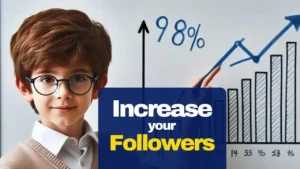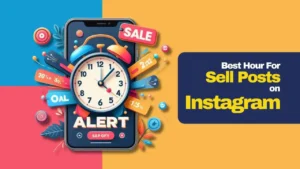The business world has become so dynamic and competitive that businesses are coming up with innovative customer reliant strategies to sustain in the market. The survival of any business has always depended on its customers.
Without customers, the business cannot survive. The stronger the customer base, the better a business’s growth and revenue.
As Peter Drucker said, “To satisfy the customer is the mission and purpose of every business”. Therefore, in this article, we will talk about an important part of the business called the customer life cycle.
Definition of Customer Life Cycle

For better clarification, put yourself in the customer’s place and imagine what he or she goes through when buying something from your company. Maybe he found your product info through an advertisement or a newsletter.
Even after he’s done with his purchase, he is still your customer. If all things go well, he might even become a repeat customer and even a brand advocate for your company. According to statistics, around 25% to 40% of the total revenue of businesses, in general, is earned from returning customers.
Essentially a customer’s life cycle begins the moment your products or services grab their attention. From there on out your job is to reel them in and make them loyal to your products or services by letting them go through different phases of their life cycle.
Eventually, this cycle will give birth to brand loyalty, which in turn will help you generate not only more revenue through the same customer but also the emergence of newer customers through referrals. Understanding the key workings behind customer life cycles can help maximize the true potential of your company through each existing, emerging, and future customer.
Customer Life Cycle Stages
Suppose a customer wants to buy a car for his family use. Odds are he will be looking into minivans and SUVs. He’s also had a car in college which had lasted him throughout his glory days and performed reliably.
Hence when he goes out to get a family or a work vehicle, what would he choose? A company where he bought a product from previously and got years of reliable service out of it? Or a company he’s just found out about in the dealership store?
Of course, he will choose the company based on his previous experiences. Even in some cases where the product is not as good as its competitions, it will still be chosen regardless.
This is known as “Brand Loyalty”, which is also the last phase of the customer life cycle. To get to this point in the cycle, there are several phases that a company needs to go through with its products and services. Let’s discuss them briefly down below:
1. Awareness:
Let’s kick things off with customer awareness first. To make customers aware of your existence, the first thing you need to do will be to sell them a product or a service your company has available.
Buying a product or a service from your company lets customers discover your existence in the greater market which is the first step you need to take to bond with them. This is even truer if you’re running a subscription service of some sort.
Companies approach this in various ways such as advertisements, online marketing, product placements, sales promotions, one-time off offers, social media influencers, etc. The idea here is to sell and build as much of a customer base as possible.
2. Knowledge:
It is almost impossible to completely monitor your customer’s buying decisions. You’ll never know if your customer saw the billboard or got referred through a friend or online channels etc.
What you need to push in this phase is the customer’s knowledge of what you provide in the market segments you do business in that other companies don’t. This allows you to create your place in the market which in turn will help you stand out amongst your competitors.
This also enables your customers to find products and best appropriate for them without much effort. You can maximize the gains of this phase by educating the customers on how to get the maximum use of your product or service through your marketing.
3. Engagement:
This is an optional phase which, in many ways, counts as a transition between the 2nd and 4th phase. In this phase, you start seeing some returns as customers who are satisfied with your products and services will seek out more marketing content of their own volition through your social marketing, notification, and email services, etc.
They will also notice how your product or service reviews are and how people speak about you. If you can manage to provide customer service through social media and other online outlets, you can give yourself an edge at this phase.
4. Evaluation:
When a customer decides to buy something, usually it’s after some research followed by a few quick comparisons and finally an instinctive check. But this doesn’t mean you need to offer more for less to undermine your completion every step of the way.
One of the best ways to stand out from your completion is to provide outright robust customer service. Often customers will have very specific inquiries to which they may not have answers available online.
If you can provide those answers for them, real-time or not, they will be more inclined to buy from you simply because they understand your offerings a bit better. Moreover, with a knowledgeable set of agents and personnel to help our customers, you will eventually see more positive reviews and feedback.
5. Purchase:

If all the other phases are carried out according to plan, you will eventually see a sales increase over time. Here you should be mindful of the purchase system. If purchasing your products or services are tedious like requiring to fill up a massive form or has additional steps that need to be carried out before purchase, it can easily put some people off from buying from your company.
The Purchase system of any kind should always be as secure as possible to ensure positive feedback from customers. Products should also be delivered easily and quickly. Most of all, your reach must cover all the areas you promised to do business in and then some.
6. Satisfaction:
After purchase comes customer satisfaction. Customers will use whatever product or service they buy from your company and with that they will fulfill their needs. If their needs are met completely, they will be satisfied with your products which in turn will get your great reviews and online and offline recommendations from them.
Nowadays, some businesses try to conduct surveys asking customers if they are satisfied with their purchase and what they could do to improve the customer experience even more. Companies also listen to their social media and other online outlets to monitor the experience that people are having and thus improve upon them by generating new ways.
Some businesses even create online questionnaires for customer feedback on their product and service improvement criteria.
7. Loyalty or Advocacy:

With all the other phases completed, you will finally find yourself a loyal fan of your products and services. As more customers buy your product, a customer base will be built and with each phase, these customers will slowly turn loyal to you. A loyal customer, even a single one, can help bring in a purchase or two through simple verbal referrals.
Having an entire loyal customer base also allows for marketing content to be spread out evenly everywhere you have a fan. These loyal advocates are a basic source or free marketing and are therefore an asset.
They can hype up a soon to be launched product or service quite a lot. They can also positively influence your social media and review outlets long after they purchased something from you. Moreover, there is always the case of internet fame.
The more internet fame your products and services gain the more discoverability they have, which is another way to bring in new customers and stay relevant long after the launch of a product or service.
Conclusion
These are the customer life cycle phases each customer needs to go through. One thing that should be kept in mind is that this life cycle needs to be managed for each customer. Meaning, every single new customer will need to go through these phases to become a loyal advocate to the brand that is your company. So, the necessary arrangements and modifications for each phase must be carried out routinely. For a company that prioritizes brand loyalty and brand Advocacy, customers should always be the top priority.




